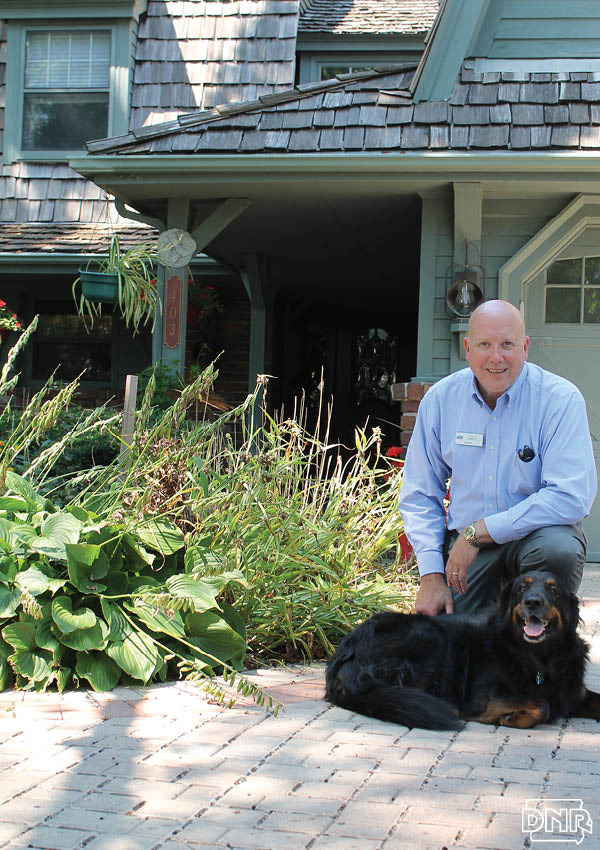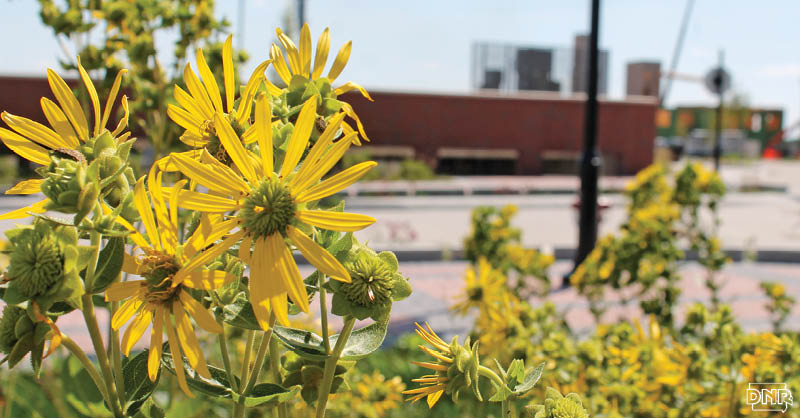 This article originally appeared in Working for Clean Water: 2015 Iowa Watershed Successes
This article originally appeared in Working for Clean Water: 2015 Iowa Watershed Successes
Generally, Coralville Lake, just upstream from its namesake town, does its job as a flood control reservoir. But the lake was no match for the floods of 1993 and 2008, creating millions of dollars in damages for the eastern Iowa town.
Following the destruction of the 2008 flood, the city began investigating stormwater practices that would help reduce runoff and better filter it to remove urban pollutants. That work has included bioswales, permeable paving and some green roofs – one easily seen from Interstate 80. City road crews now use a mix of beet juice and salt to de-ice roads.
As the city expands Coral Ridge Avenue from two lanes to four, grant funds from the Watershed Improvement Review Board and Rockwell Collins will help install native plants in bioretention cells, both in the median and along the shoulders, to catch runoff along the busy road. The Coral Ridge Avenue biocells should handle a 2.3-inch rain event at a cost that Coralville stormwater coordinator Amy Foster estimates to be similar to traditional storm sewer infrastructure.
That goes well beyond the city’s new post-construction stormwater ordinance, which requires all new development or redevelopment to absorb a 1.25-inch rainfall event.
Foster says statistics suggest that in the next 20 years, about 50 percent of development will be redevelopment. “That gives us a second chance to do it right,” she says.
That’s something that resonates well in Coralville. The city encourages its residents to join the effort by offering matching grants to use practices that slow and reduce runoff to the city’s storm sewer system, which also helps improve water quality in Clear Creek and the Iowa River. That can include rain gardens, bioretention swales, rain barrels, pervious paving, soil quality restoration and more. Last year, the city gave out $25,000 in cost-share funding for these practices, and the city council upped the amount available to $30,000 for the coming fiscal year.
“It’s been really popular. They really love that program,” says Foster of residents. “People see this as not only necessary, but their responsibility as a good neighbor.”
While small practices like these may not prevent a catastrophic flood like in 1993 or 2008, it can help on a day-to-day basis and reduce localized flooding. Mayor John Lundell installed a pervious driveway at his home, and monitoring done there by the University of Iowa has shown that it’s reducing peak stormwater flows. In the last year, the driveway hasn’t discharged any water via its overflow tile to the storm sewer, soaking in all runoff.
“It’s infiltrating a lot more water than we thought,” says Foster. Green practices also offer a cost-efficient option in older areas of town. “We have a lot of opportunity to implement green infrastructure into older neighborhoods that have limited storm sewers,” Foster says.
A number of biocells, pervious paving and rain gardens will soon go in at private sites in Coralville, with construction of practices overseen by the Johnson Soil and Water Conservation District. The city will also continue working on practices at the new Iowa River Landing, a green infrastructure development, as well as in the right of way along Fifth Street. There, native turf and tree infiltration boxes will help reduce runoff to the storm sewers.
